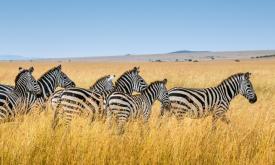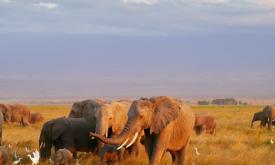Species Protection Index (SPI) evaluates the species-level ecological representativeness of each country’s protected area network. It is a measure of the extent to which a country’s protected areas are ecologically representative on the species level, calculated as the average proportion of the suitable habitat of a country’s species included in the country’s terrestrial protected areas. The index is built on remote-sensing informed species distribution and the protected areas and it is designated to report progress towards AICHI Target 11.
RIS Feed
Species Protection Index

Megafauna Conservation Index

The Megafauna Conservation Index (MCI), developed by researcher led by Peter Lindsey of the University of Pretoria in South Africa, wants to assess the spatial, ecological and financial contributions of countries towards conservation of the world’s terrestrial megafauna. The index focused on three main components regarding megafauna ecology and conservation:
the proportion of the country occupied by each megafauna species,
the proportion of the range of these species that’s strictly protected in each country
Forest-related greenhouse gas fluxes

Net forest-related greenhouses gas flux represents the net exchange of greenhouses gas between forests and the atmosphere between 2001 and 2020. This net flux layer is part of the forest carbon flux model described in Harris et al. (2021). Here, the average annual net fluxes in MtCO₂e is shown at global level and the average annual net fluxes in MtCO₂e/ha in protected areas and outside protected areas at national level.
Irrecoverable Carbon

A new paper published in Nature Sustainability mapped the irrecoveral carbon in earth's ecosystems. It shows how manageable, vulnerable and irrecoverable carbon are distributed among ecosystems. Petland, mangrove forests, old-growth forests are the most important-reserve of irrecoverable carbon.
Mountain ecosystems in protected areas
Share of mountain ecosystems in protected areas. Ecosystems extracted from USGS-TNC World Terrestrial Ecosystems under "mountain" landform category.
---
Data Uploaded by Claudia Capitani using the BIOPAMA Services (2022)
Ecosystem services economic value in Timor Leste
This indicator shows economic value of ecosystem services in Timor Leste biomes, estimated through regionalised summary values from the Ecosystem Services Value Database.
Ecosystem services value in Timor Leste - by key informants
How much value do ecosystems hold in Timor-Leste? Evaluation by local key informants
Stakeholders-informed evaluation of ecosystem services in biomes of Timor-Leste. This evaluation is based on key informants opinion on ecosystem services importance and the role of each biome in providing them. Biomes follow the defintion adopted for the Ecosystem Services Value Database https://www.esvd.info/ and are derived from the Copernicus Hot Spot Land Cover map for 2016.
Carbon Storage in Mangrove Forests

Mangroves provide both climate change mitigation and adaptation services. They provide benefits for coastal communities and they are among the most effective carbon-capture ecosystems. If they are degraded or cleared, the carbon stored will be released into the atmosphere as CO2 and it will exacerbate climate changes.
Forest Landscape Integrity Index

The Forest Landscape Integrity Index (FLII) is a composite index created to show the degree of forest integrity for 2019.
The authors identified three Forest Integrity categories: “high ”“medium”, and “low”.
Representativeness of semi-natural terrestrial ecosystems in protected areas
Number of terrestrial semi-natural ecosystems protected compared to those existing in each country.
Terrestrial Ecosystems in Country and WDPA protected sites. Analysis performed by L. Battistella in February 2021. Original dataset provided by "USGS-TNC" (World Terrestrial Ecosystems, Sayre et al. 2020).
Pagination
- Page précédente
- Page 4
- Page suivante